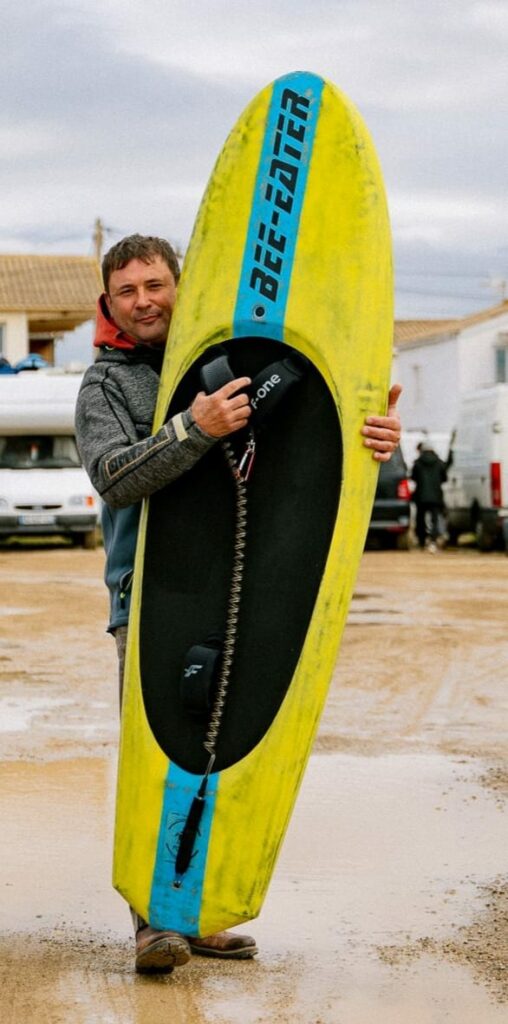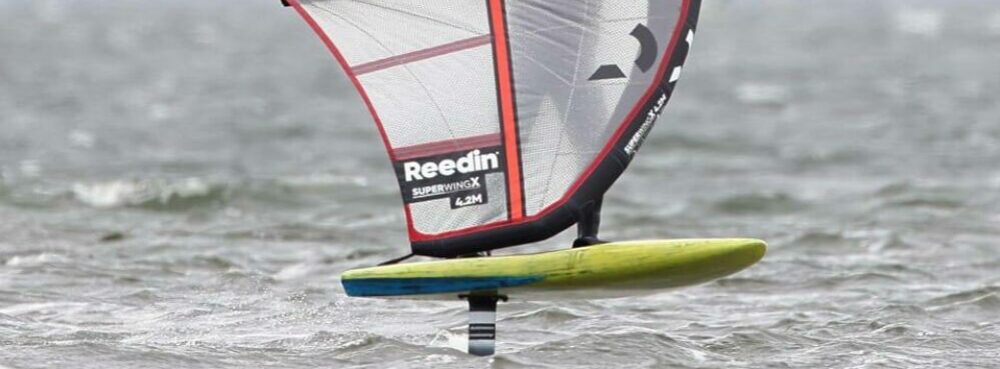I discovered Wingfoil when it first came out in 2020, and was immediately seduced by the concept and novelty of this glide. Gone was the windsurfing board of my early 80s days, a Bic or a Dufour weighing around twenty kilos with a beautiful triangular sail…
My career path took me to the other side of the world, to Japan. I stayed there for almost 25 years to practise my trade as a luthier, and, in the absence of windsurfing, I practised other board sports: skiing, snowboarding and skwal in winter, and freestyle kayaking in rivers and kayak surfing at sea the rest of the time.
I moved back to France around the same time as the Wingfoil appeared, and decided to give it a go. A weekend training course with world champion Titouan Galéa and my first flights confirmed what I had already thought: this sport is for me and it’s extraordinary!
So I equipped myself with the gear I needed to get started: a big 6.6′ 140L board for my 90kg, a nice 2100 cm² Gong foil, and I made good progress. Having started in autumn, I persisted throughout the winter to get through my maneuvers before the following summer. And the result paid off.
I soon found myself with equipment that no longer matched my level. Not really convinced by the products sold by the major brands on the market, I turned to a local shaper for a board adapted to the wind and water conditions in my region. Unfortunately, I wasn’t satisfied with the product, which led me to build my own board.
Aided by my experience with violins and my manual dexterity, I discovered the joys of working with polystyrene, resin and carbon fiber. And to my great surprise, I found most of the same gestures and sensations I’d experienced with wood. The different stages are very similar: working with the material, creating shapes, sanding and finishing.
I love it.
The first board was a success, at least for me personally, and I continued to build on my success with a large board with a sup foil edge for light winds and another inspired by surf foil for heavy winds.
Then people started to see my creations and asked me to make one for them.
One thing led to another, and in early 2022 I set up my own foil board manufacturing company.
At first with a classic epoxy/sandwich airex/carbone vacuum-bonded construction; a meeting brought me a special order and led me to discover and adopt a different construction method.
Indeed, Alexis Maréchal, manufacturer of Aeromod foils, placed an order for a full honeycomb/carbon sandwich board. No more airex, then, but an Aramid honeycomb structure twice as light as airex, malleable to follow all the curves of a board, and above all extraordinarily stiff once layered; not only in compression (airex) but also and above all in flexion/torsion.
Once I overcame the difficulties associated with this construction method, I discovered a totally transformed board on the water.
Everything is easier, and the board is extraordinarily stiff and incredibly responsive.
I was so surprised by the result that I decided to build my new boards exclusively in honeycomb.
And the shape is so effective that I use it immediately for the rest of my projects.
As far as I know, I’m currently the only person building Wing boards using this technique.

Clément LALUBIN

 English
English Français
Français